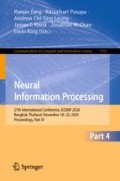Abstract
The surveillance of meteors is important due to the possibility of studying the Universe and identifying hazardous events. The EXOSS initiative monitors the Brazilian sky with cameras in order to identify meteors, leading to a great quantity of non-meteor captures that must be filtered. We approach the task of automatically distinguishing between meteor and non-meteor images with the use of pre-trained convolutional neural networks. Our main contributions are the revision of the methodology for evaluating models on this task, showing that the previous methodology leads to an overestimation of the expected performance for future data on our dataset; and the application of probability calibration in order to improve the selection of most confident predictions, showing that apart from obtaining probabilities that better reflect the confidence of the model, calibration can lead to concrete improvements on both accuracy and coverage. Our method achieves 98% accuracy predicting on 60% of the images, improving upon the performance of the uncalibrated model of 94% accuracy predicting on 70% of the images.
Supported by FAPESP (2018/20508-2).
Access this chapter
Tax calculation will be finalised at checkout
Purchases are for personal use only
References
Barlow, R.E., Brunk, H.D.: The isotonic regression problem and its dual. J. Am. Stat. Assoc. 67(337), 140–147 (1972)
Bishop, C.M.: Pattern Recognition and Machine Learning. Springer, New York (2006)
Cecil, D., Campbell-Brown, M.: The application of convolutional neural networks to the automation of a meteor detection pipeline. Planet. Space Sci. 186, 104920 (2020)
De Cicco, M., et al.: Artificial intelligence techniques for automating the CAMS processing pipeline to direct the search for long-period comets. In: Proceedings of the IMC, Petnica (2017)
Galindo, Y.O., Lorena, A.C.: Deep transfer learning for meteor detection. In: Anais do Encontro Nacional de Inteligência Artificial e Computacional (ENIAC) (2018)
Girshick, R., Donahue, J., Darrell, T., Malik, J.: Rich feature hierarchies for accurate object detection and semantic segmentation. In: Proceedings of the IEEE Conference on Computer Vision and Pattern Recognition, pp. 580–587 (2014)
Goodfellow, I.J., Bulatov, Y., Ibarz, J., Arnoud, S., Shet, V.: Multi-digit number recognition from street view imagery using deep convolutional neural networks. arXiv preprint arXiv:1312.6082 (2013)
Guo, C., Pleiss, G., Sun, Y., Weinberger, K.Q.: On calibration of modern neural networks. In: Proceedings of the 34th International Conference on Machine Learning, vol. 70. pp. 1321–1330. JMLR.org (2017)
Gural, P.S.: Deep learning algorithms applied to the classification of video meteor detections. Mon. Not. Roy. Astron. Soc. 489(4), 5109–5118 (2019)
He, K., Zhang, X., Ren, S., Sun, J.: Deep residual learning for image recognition. In: Proceedings of the IEEE Conference on Computer Vision and Pattern Recognition, pp. 770–778 (2016)
Kingma, D.P., Ba, J.: Adam: a method for stochastic optimization (2014)
Marsola, T.C., Lorena, A.C.: Meteor detection using deep convolutional neural networks. In: Anais do Simpósito Brasileiro de Automação Inteligente, vol. 1, p. 104260 (2019)
Molau, S., Gural, P.: A review of video meteor detection and analysis software. WGN J. Int. Meteor Organ. 33, 15–20 (2005)
Moorhead, A.V., Cooke, W.J., Campbell-Brown, M.D.: Meteor shower forecasting for spacecraft operations (2017)
Norouzzadeh, M.S., et al.: Automatically identifying, counting, and describing wild animals in camera-trap images with deep learning. Proc. Natl. Acad. Sci. 115(25), E5716–E5725 (2018)
Zadrozny, B., Elkan, C.: Transforming classifier scores into accurate multiclass probability estimates. In: Proceedings of the Eighth ACM SIGKDD International Conference on Knowledge Discovery and Data Mining, pp. 694–699 (2002)
Acknowledgment
We thank FAPESP for funding this research (grant 2018/20508-2), the EXOSS organization for providing the data and astronomy expertise, and Pete Gural for discussions.
Author information
Authors and Affiliations
Corresponding author
Editor information
Editors and Affiliations
Rights and permissions
Copyright information
© 2020 Springer Nature Switzerland AG
About this paper
Cite this paper
Galindo, Y., De Cicco, M., Quiles, M.G., Lorena, A.C. (2020). Monitoring Night Skies with Deep Learning. In: Yang, H., Pasupa, K., Leung, A.CS., Kwok, J.T., Chan, J.H., King, I. (eds) Neural Information Processing. ICONIP 2020. Communications in Computer and Information Science, vol 1332. Springer, Cham. https://doi.org/10.1007/978-3-030-63820-7_53
Download citation
DOI: https://doi.org/10.1007/978-3-030-63820-7_53
Published:
Publisher Name: Springer, Cham
Print ISBN: 978-3-030-63819-1
Online ISBN: 978-3-030-63820-7
eBook Packages: Computer ScienceComputer Science (R0)

